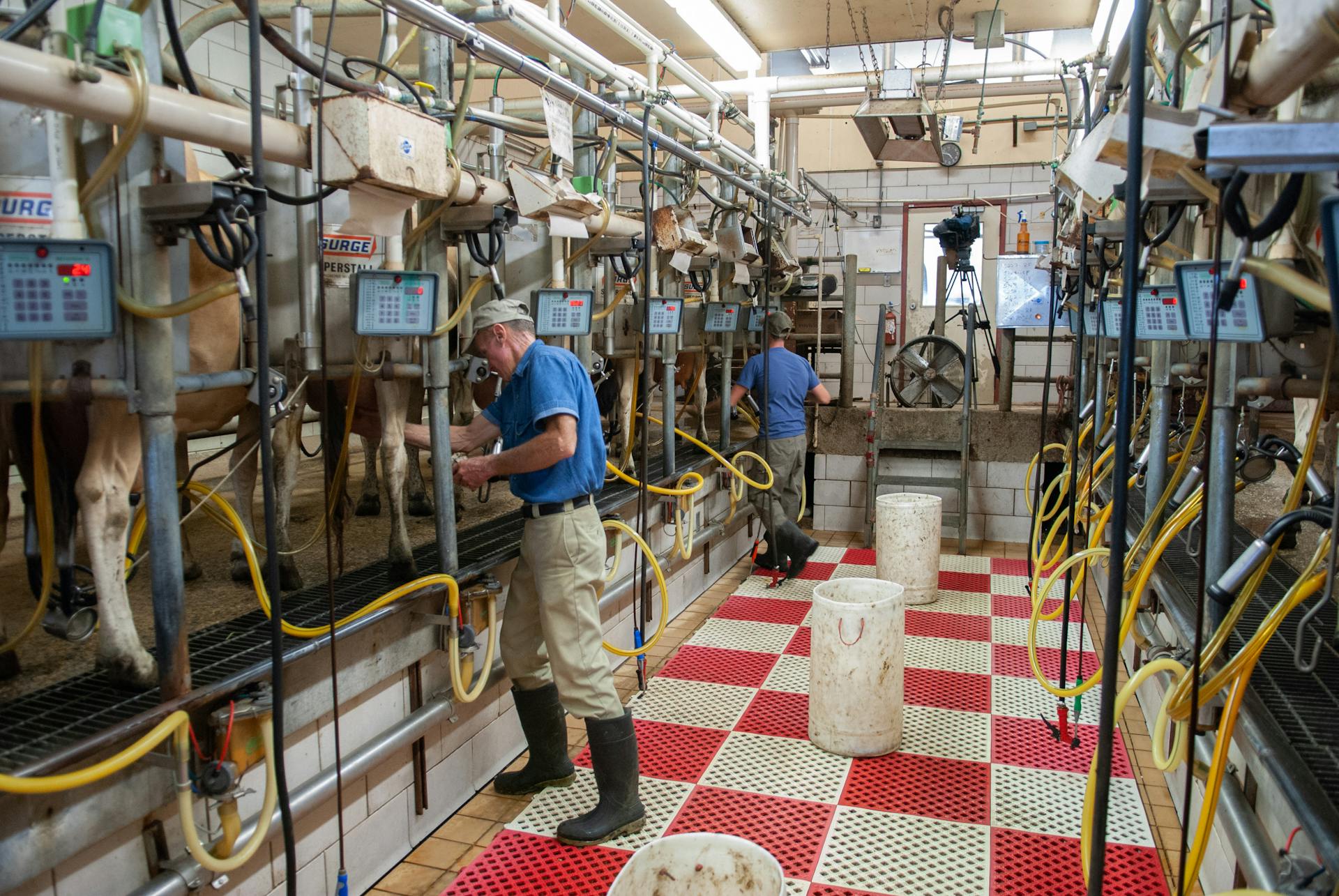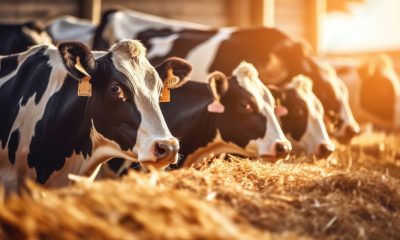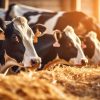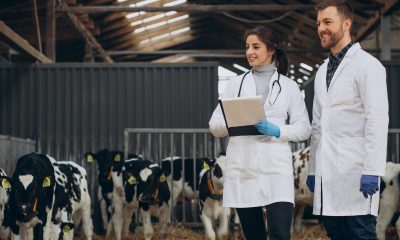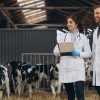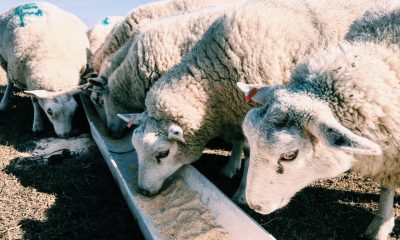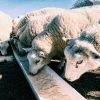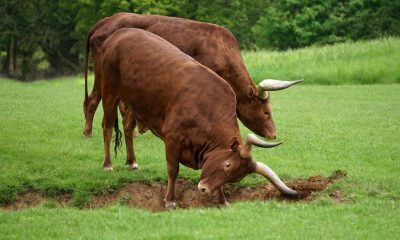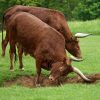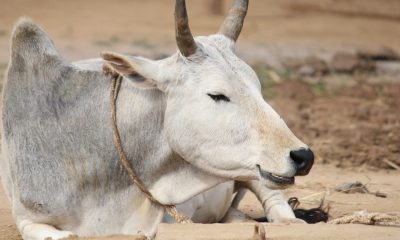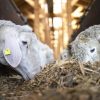Cattle
Robotic Milking Systems: Advancements in Dairy Farm Automation
Introduction
Dairy farming has come a long way from the traditional image of farmers manually milking cows in the early morning. Today, technological advancements have revolutionized the industry, with one of the most significant breakthroughs being the development of robotic milking systems. These automated systems have improved the efficiency of dairy operations and positively impacted animal welfare and overall farm sustainability. In this blog, we’ll explore the advancements in robotic milking systems and their benefits to dairy farmers.
The Rise of Robotic Milking
Automated milking systems, commonly called robotic milking systems or automatic milking systems (AMS), are a form of precision farming technology that automates the milking process for dairy cows. Instead of traditional manual milking, where farmers must be present to milk the cows at set intervals, robotic milking systems allow cows to be milked whenever needed. These systems utilize technology, sensors, and automation for a more efficient and humane milking process.
Advancements in Robotic Milking
Robotic milking systems have seen remarkable advancements in recent years, making them even more attractive to dairy farmers.
- Individual Cow Recognition
In the past, robotic milking systems typically identified cows based on a group level, but recent advancements include individual cow recognition technology. Each cow has an electronic tag that allows the system to identify cows uniquely. This precision helps tailor the milking process to the specific needs of each cow, ensuring a more efficient and cow-friendly milking experience.
- Improved Teat Cleaning and Attachment
Ensuring the teats are thoroughly cleaned before milking is crucial for milk quality and cow health. Modern robotic milking systems are equipped with advanced teat cleaning and attachment mechanisms. These systems use laser-guided technology to clean and attach milking cups precisely, minimizing the risk of infection and ensuring optimal milking conditions.
- Enhanced Data Analytics
Data is at the heart of modern dairy farming, and robotic milking systems are becoming increasingly sophisticated in collecting and analyzing data. These systems can monitor various parameters, such as milk yield, milking frequency, and cow behaviour. The data generated can be used for health monitoring, fertility management, and overall herd performance optimization.
- Integration with Cow Health Monitoring
Robotic milking systems are now being integrated with cow health monitoring technologies. These systems can detect early signs of health issues such as mastitis or lameness and alert the farmer for prompt intervention. By addressing health concerns promptly, farmers can ensure better animal welfare and maintain milk production levels.
- Sustainability Features
Many modern dairy farms aim for sustainability, and robotic milking systems align with this goal. Some advancements include tracking the environmental impact of dairy farming, such as energy and water usage. Additionally, some systems are designed to minimize waste, such as reducing water consumption during cleaning cycles.
- User-Friendly Interfaces
The user interfaces of robotic milking systems have become more intuitive and user-friendly. Farmers can easily customize milking settings, access data, and receive notifications through mobile apps and web interfaces. This simplifies farm management and ensures that even those with limited technical expertise can efficiently operate these systems.
- Remote Management and Troubleshooting
Robotic milking systems now allow for remote management and troubleshooting. Farmers can monitor and control the system from anywhere, reducing the need for constant on-site presence. Many technical issues can be diagnosed and solved remotely, minimizing downtime.
- Integration with Cow Comfort Technologies
Cow comfort is a vital aspect of dairy farming. Some robotic milking systems are integrated with technologies that monitor and enhance cow comfort. This can include adjusting barn climate, controlling lighting, and providing cows with comfortable resting areas, increasing milk production.
Benefits for Farmers
Dairy farming has seen a significant transformation in recent years with the advent of robotic milking systems. These cutting-edge technologies have brought many advantages for dairy farmers, improving their operations, enhancing cow welfare, and revolutionizing how they manage their herds. The various benefits that robotic milking systems offer dairy farmers are:
- Enhanced Efficiency
Robotic milking systems function 24/7, enabling cows to decide when they want to be milked. This flexibility enhances the efficiency of the milking process, as cows can access the milking station at their convenience. Consequently, dairy farmers can attain increased milk yields while minimizing stress on the animals.
- Labour Savings
One of the foremost advantages of robotic milking systems is reduced labour requirements. These systems automate the milking process, eliminating the need for manual labour in the milking shed. Farmers can reallocate their time and resources to other essential farm tasks, ultimately enhancing productivity.
- Data-Driven Management
Robotic milking systems collect a wealth of data, including each cow’s milk production, behaviour, and health. This data provides farmers with valuable insights into their herd’s performance. They can make informed decisions about breeding, nutrition, and health management, resulting in more effective herd management.
- Improved Cow Welfare
Robotic milking systems prioritize the welfare of dairy cows. These systems allow cows to choose when to be milked, eliminating the need to stand in line or adhere to strict milking schedules. This freedom reduces stress and promotes better animal welfare, ensuring that cows are more comfortable and content.
- Remote Monitoring
Farmers can remotely access and monitor their robotic milking systems through mobile apps and computer interfaces. This feature allows them to monitor their herd’s milking progress and overall health, even when away from the farm. It provides peace of mind and the flexibility to manage their operations from anywhere.
- Increased Milk Quality
Robotic milking systems are equipped with advanced technology that can detect abnormalities in the milk, such as mastitis or other health issues. Early detection of these problems allows for prompt intervention, leading to improved milk quality and a reduced risk of contamination.
- Technological Advancements
Embracing robotic milking systems keeps dairy farmers at the forefront of agricultural technology. It ensures they are well-prepared for the future and can adapt to emerging innovations in the industry. Staying technologically up-to-date is essential for the long-term success of dairy farms.
- Flexible Working Hours
With robotic milking, the rigid schedule of traditional milking has become a thing of the past. Dairy farmers can enjoy more flexible working hours, balancing their work and personal lives more effectively. This flexibility contributes to their overall well-being.
Challenges and Considerations
Advancements in dairy farm automation, particularly the adoption of robotic milking systems, have undoubtedly brought many benefits. However, these systems also come with several significant challenges that dairy farmers must address. Here are some of the critical challenges associated with robotic milking systems in the context of dairy farm automation:
Initial Investment Costs: The upfront cost of implementing robotic milking systems is high. Farmers need to invest in the purchase and installation of the equipment, which can be a significant barrier for smaller or less financially secure dairy farms.
Maintenance and Repairs: Like any machinery, robotic milking systems require regular maintenance and occasional repairs. Ensuring timely care and access to spare parts can be challenging, especially in remote or underdeveloped areas.
Labour and Training: While RMS reduce manual labour in milking, they require skilled labour for operation, maintenance, and troubleshooting. Finding and retaining qualified personnel can take much work for some dairy farms.
Data Management: RMS generates vast amounts of data related to cow health, milk quality, and system performance. Effectively managing and evaluating this data can be challenging for farmers, and they may require support for data-driven decision-making.
Cow Adaptation: Not all cows readily adapt to robotic milking. Some may need to be more confident and comfortable with the automated systems, leading to reduced milk yield and overall efficiency. Farm operators need to address cow behaviour and comfort to maximize the benefits of RMS.
Reliability and Downtime: RMS are complex systems; technical glitches or downtime can disrupt milking schedules. Maintaining high system reliability and minimizing downtime is crucial for the continuous operation of the dairy farm.
Integration with Other Farm Technologies: Many modern dairy farms use various technologies for feeding, health monitoring, and waste management. Ensuring seamless integration between RMS and these other systems can be challenging.
Environmental Considerations: It is necessary to consider the energy usage and environmental effects of robotic milking systems. Using sustainable energy sources and minimizing resource consumption is essential for long-term viability.
Regulatory and Ethical Considerations: Compliance with local and international regulations and ethical concerns related to animal welfare and agricultural automation must be considered in adopting RMS.
Scalability: Adapting robotic milking systems for more extensive dairy operations with many cows can be complex. Designing systems that can efficiently handle a large herd is an ongoing challenge.
Cost-Benefit Analysis: Evaluating the long-term financial benefits of implementing RMS and assessing the return on investment can be challenging for dairy farmers. This requires careful financial planning and an understanding of the economic implications of automation.
The Future of Dairy Farming
As technology continues to advance, the future of dairy farming looks promising. Robotic milking systems are likely to become even more sophisticated and efficient, further improving the livelihoods of dairy farmers and the well-being of their cows. These systems will continue to play an essential part in satisfying the rising demand for dairy products while ensuring sustainable and responsible farming practices.
Conclusion
Robotic milking systems have brought about a revolution in dairy farming. They enhance efficiency, improve animal welfare, and provide farmers with valuable data for better decision-making. While there are initial challenges, the long-term benefits make them a worthy investment for dairy farms looking to stay competitive and sustainable in the modern agricultural landscape. As technology continues to evolve, the future of dairy farm automation looks promising, with further advancements on the horizon.



